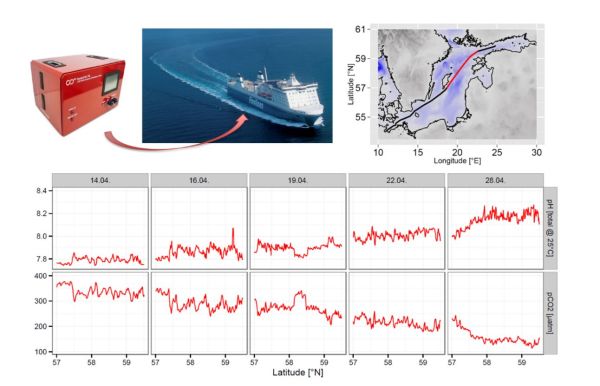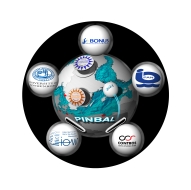Overview on field testing of the developed prototypes
The main scope of the project was the development of a spectrophotometric pH measurement system for use in the Baltic Sea and other brackish water systems. A total of three prototypes with increasing maturity were constructed during the project. The prototypes were tested during field and lab studies to assess the performance and user-friendliness, directly supporting the further development of the instruments. Main field work included a test aboard the voluntary observing ship Finnmaid operated by Finnlines in April 2015, where the instrument was deployed in continuous mode in parallel to the pCO2 underway system installed permanently on the ship. As both parameters are anti-correlated, the setting was perfect for a comparison of the newly developed pH-prototype with an established method for another parameter of the CO2-system.

Further field tests in 2015 comprised a 10 day expedition on RV Oceania in may 2015, including a long-term precision test and performance evaluation in the southern Baltic Sea, including the transect from Pomeranian Bay to the mouth of the Odra River under a large range of salinity, alkalinity, and pCO2 conditions, and a test at the Kristineberg field station in Sweden.
The main field test of two instruments set up to the technology of the second prototype took place on RV Oceania from November 14-20th, 2016, on a cruise entirely dedicated to BONUS PINBAL in the Gulf of Gdansk, the Szczecin Lagoon, the Pomeranian Bay and the coastal Baltic Sea waters in between. Valuable insights into the system’s performance could be achieved through the availability of the two prototypes and the additional use of a benchtop spectrophotometric pH-measurement system for discrete samples provided by IOW. The report and analysis of the observations during the final field test guided further improvements, leading to the close-to-market prototype (version 3), the final hardware development of the project.

